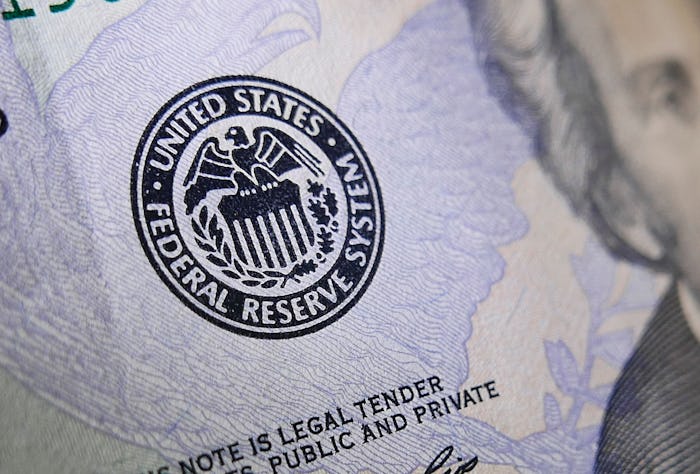News

What Does The Federal Reserve Do? The Federal Reserve Controls The Financial System
If you've ever handed over a $20 bill to pay for for your favorite late night snacks from the grocery store, then you've probably seen the Federal Reserve's seal on the bill. And if you have never noticed the seal — then look a little bit closer; you'll see it, located to the left of Andrew Jackson's face. But just seeing that seal doesn't actually help explain what the Federal Reserve does, for those who may have fallen asleep in high school civics class, or forgotten. The Federal Reserve is in charge of controlling the American financial system — and its official meeting on Wednesday led to the first interest rate increase in over a year.
Here's what all that means: The Federal Reserve raised interest rates to a range .50 percent and .75 percent on Wednesday for the first time in a year, according to CNN. Millions of Americans looking to invest their money, save their money, or buy a home within the next year will definitely be affected by this rate increase. According to CNN, by increasing interest rates, this means the Federal Reserve has "confidence in the improving United States economy." As The Washington Post points out, this means that there are now budding signs of higher inflation. Those with home mortgages or car payments may be paying more now each month due to the interest rate rising.
But what else does the Federal Reserve do when it's not increasing interest rates? The Federal Reserve "regulates the American financial system," according to The New York Times and therefore, by association, regulates the economy. Controlling interest rates and regulating the market is how the Federal Reserve prevents inflation — or, the "general increase in prices and fall in the purchasing value of money," according to the Oxford English Dictionary, if you're not familiar — especially with unemployment rates decreasing, according to The Washington Post. Therefore, by raising interest rates just a little bit, the Federal Reserve wants to slow down the economy and spending, according to The New York Times.
The Federal Reserve was founded in 1913 by President Woodrow Wilson to provide the nation with a safe and flexible monetary and financial system. The Federal Reserve aims to maintain employment and stable prices in the United States altogether along with supervising banks to protect consumers. According to Business Insider, the Federal Reserve can be viewed as the "central bank" of the United States. As the central bank, the Federal Reserve impacts the market in its actions and decisions based on the current economy and impacts the future economy. But despite what its title suggests, as the central bank of the United States, the Federal Reserve does not print money — the United States Treasury does that. Instead of printing the money, the Federal Reserve "controls the amount of cash plus the amount of credit circulating throughout economy," according to Yahoo Finance.
Think of it this way — the Federal Reserve exists to make sure that employment rates are up and to regulate the economy. In the past few years, the Federal Reserve has been responsible for allowing so many people to purchase cars and homes, due to low interest rates. People might be paying a little more on their mortgages now due to this small increase but should be assured that this is for a good reason — it means the economy is doing well. The Federal Reserve recognizes that, and so should we.